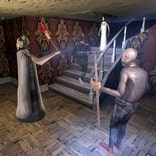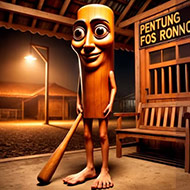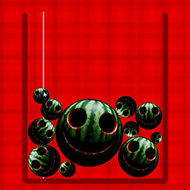Tung Tung Tung Sahur blends reflex-testing gameplay with rhythmic anticipation in a uniquely timed experience. This game operates on precise beats and bizarre timing windows where players must synchronize their reactions to a nontraditional set of musical cues. It’s not a simple rhythm game—it’s a hybrid of puzzle logic, mini-challenges, and fast-paced decision-making under pressure.
How the Timing Challenge Works
The core mechanic of Tung Tung Tung Sahur revolves around the “Tung” moments. These are unpredictable beats that can signal different outcomes depending on context. You’re required to hit, dodge, or trigger actions in sync with these cues, but the game plays with your expectations. Timing changes, fake-outs, and inverted sound patterns all keep you on edge.
- Multiple “Tung” Signals: Not all sounds mean the same thing. Each tone has to be interpreted based on the level’s visual and situational context.
- Beat Breaks: Some levels purposely remove background rhythm, forcing players to predict cues from visual hints alone.
- Combo Layers: Successive “Tung” chains score higher, but any miss can reset progress or cause setbacks.
Levels That React to You
Each stage in Tung Tung Tung Sahur feels like a living environment. Platforms appear or vanish based on how accurately you react. Some elements respond to combo streaks, altering enemy movement or unlocking bonus routes. This makes each playthrough dynamic, especially during higher-difficulty modes.
- Environmental Feedback: Backgrounds shift color and speed as your timing improves or worsens.
- Boss Tung Trials: Special levels feature audio trickery and reversals, where wrong cues are intentionally placed to confuse rhythm memory.
- Split Screen Sync: In later stages, you must watch two halves of the screen simultaneously, syncing input to both timelines.
Endurance, Memory, and Pattern Disruption
Unlike standard rhythm formats, this game leans into chaotic testing of your concentration. Memory patterns develop subtly—certain levels repeat sounds out of sequence or change tempo mid-round. There’s even an “anti-rhythm” mode where predictable cues are masked entirely. If you rely solely on beat memory, the system will force you to adapt.
Tung Tung Tung Sahur is more than a rhythm game—it’s an experimental challenge in timing logic and sensory adaptation. Whether you’re trying to beat your own high score or aiming to master perfect input chains, this game pushes your reaction skills in unexpected directions.




















